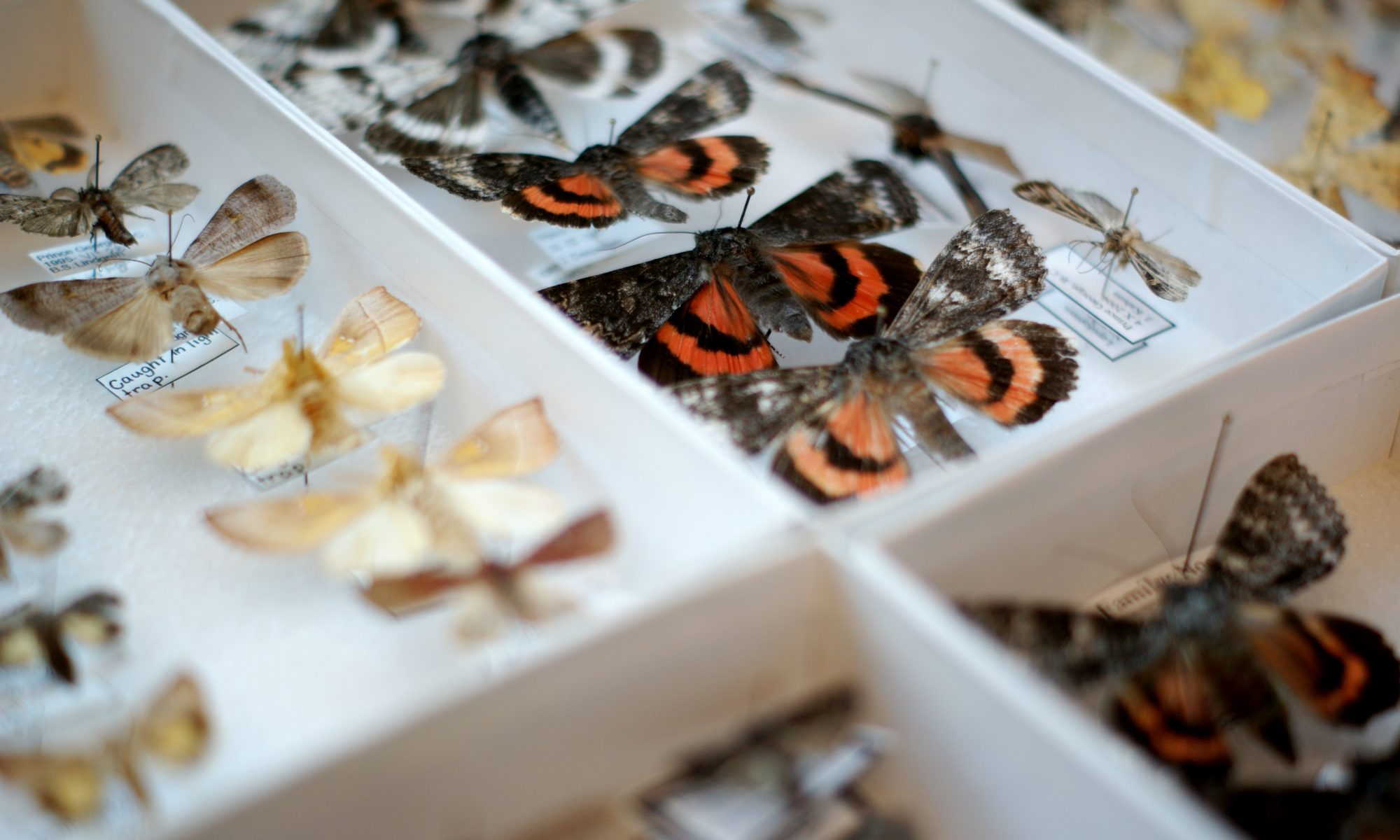Over the past few weeks, Prince George and other parts of British Columbia have seen a massive outbreak of tent caterpillars. And that, of course, means that people have been talking about insects. A lot. In fact almost everyone in town has become, at least for a short while, an amateur entomologist. In some cases, I have heard some pretty interesting observations from people. There have also been a few fascinating forays into applied economic entomology as well – my favorite being the lady who filled her Shop Vac half full of soapy water and used it to suck the caterpillars off of her shrubs.
Of course, an infestation of this size has unpleasant aspects. My wife and kids did not like going out in the backyard during the peak of the outbreak. And I don’t blame them, as I wasn’t too keen on it either. A short walk through our yard would leave us draped in zillions of invisible strands of caterpillar silk with a few of the creatures crawling up our necks. And even a simple task like coiling the garden hose would leave your hands covered in squished caterpillar goo. So, I fully understand not fully appreciating these creatures when they occur in vast numbers. Beyond making parts of our city look like autumn is already here, they have been just a general nuisance.
That said, I do not understand today’s editorial in the local newspaper. The editor spent a lot of column space writing about insects, pulling out some interesting and salient facts. Yes, insect biodiversity is astounding. Yes, some of them would likely survive even if an apocalyptic natural event wiped out all of human life. Yes, as implied, we share a more recent common ancestor with other vertebrates than we do with insects. All valid points.
Then these bits:
“Our hatred of caterpillars and other bugs also has a basis in evolution.”
and
“We’re right to fear and hate them as much as we do.”
Really?
Since the muse for the editorial seems to be the swarms of tent caterpillars in town, let’s start with some reasons not to “fear and hate” them.
First, although they cause a great deal of visible damage, they are unlikely to kill many trees at all. So on the “fear and hate” side of the ledger we are left with temporary cosmetic damage and a bit of hassle in the yard for a few weeks. On the other hand, they do have benefits. This article nicely summarizes many of them. For instance:
- they are a natural part of a functioning forest ecosystem.
- their removal of canopy leaves allows light to the forest floor, giving some plants down there a leg (or limb?) up.
- caterpillars and the moths that they become provide food for other organisms.
- caterpillar poop gives a burst of nutrients to the forest floor.
- all of these things, over time and many cycles, make a forest what it is.
In other words, if there weren’t periodic outbreaks of defoliators, our forests would be much different from what we enjoy today both in terms of the forest structure and the plants and animals that live there.
But, even if you don’t believe me that the benefit side of the ledger is much more substantial than the detriment side for tent caterpillars, perhaps you’ll agree with me on some easier-to-prove examples:
- Ants are responsible for distributing and planting seeds and are a major driver of the diversity of plants that we enjoy.
- Ants also aerate the soil, and provide many related benefits.
- Bees pollinate flowers –a vital part of our food supply – and give us honey.
- All sorts of other insects pollinate flowers as well, including mosquitoes.
- Many insects eat or otherwise kill other creatures that we consider to be pests.
- Insects are the food for many animals that we all agree that we love.
- Insects are food for many people as well.
- Butterflies and many moths are just beautiful, as are many beetles.
- Kids love them (calling into question the odd notion of the supposed innate insect “hatred” having a “basis in evolution”).
If this recent caterpillar outbreak has shown us anything, it is that people are fascinated by insects – and by nature in general.
To give the editor the benefit of the doubt, as pointed out by a colleague of mine:
@docdez @pgcitizen I’ve seen worse. But he confused “respect” with “hate and fear”. And writing “..spiders and other insects”, doesn’t help.
— Staffan Lindgren (@bslindgren) June 7, 2013
And perhaps that’s true; perhaps the editor meant “respect.” But, one way or the other, I would prefer more coverage of the wonders of nature and more encouragement for people to get outside and to see what’s really going on out there, than demonization of vast segments of the natural world with careless words – even if the intent of those words is mainly to amuse. If we want people to care about the global environment, it’s not wise to begin with making them think that they have reason to hate the local fauna and flora.
Rather show people why it’s so awesome out there, and they’ll begin to understand why we are all so intimately connected with those very insects that are buzzing around our yards and jogging paths.
And in time that will turn more people from being armchair environmentalists (at best) to being actual hands-in-the-soil and boots-on-the-ground naturalists who have a stake in real conservation.
